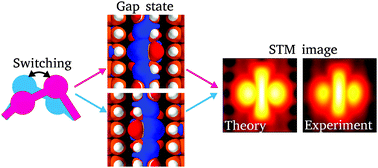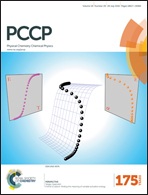The butterfly – a well-defined constant-current topography pattern on Si(001):H and Ge(001):H resulting from current-induced defect fluctuations†
Abstract
Dangling bond (DB) arrays on Si(001):H and Ge(001):H surfaces can be patterned with atomic precision and they exhibit complex and rich physics making them interesting from both technological and fundamental perspectives. But their complex behavior often makes scanning tunneling microscopy (STM) images difficult to interpret and simulate. Recently it was shown that low-temperature imaging of unoccupied states of an unpassivated dimer on Ge(001):H results in a symmetric butterfly-like STM pattern, despite the fact that the equilibrium dimer configuration is expected to be a bistable, buckled geometry. Here, based on a thorough characterization of the low-bias switching events on Ge(001):H, we propose a new imaging model featuring a dynamical two-state rate equation. On both Si(001):H and Ge(001):H, this model allows us to reproduce the features of the observed symmetric empty-state images which strongly corroborates the idea that the patterns arise due to fast switching events and provides an insight into the relationship between the tunneling current and switching rates. We envision that our new imaging model can be applied to simulate other bistable systems where fluctuations arise from transiently charged electronic states.



 Please wait while we load your content...
Please wait while we load your content...